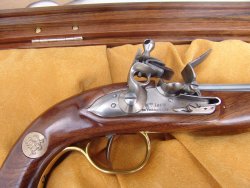Everything started during the Egyptian Campaign in the 1799, when the Mamelukes cavalry regiments who were fighting in defense of the king in that area, aroused curiosity and admiration for their courage and their military organization. Napoleon Bonaparte decided then to include these cavalrymen into his army creating, in 1802, the first Mamelukes squadron of the Republic led by the General Jacques François de Menou.
With the decree dated 29th of July 1804 the unit was incorporated into the Cavalry Hunters regiment of the Napoleon Imperial Guard, however soon after the Mamelukes became an independent unit. Born fighters, the Mamelukes attended all Napoleon’s campaigns and distinguished themselves for their skill in battle and great courage. In 1812, the year of the Russian campaign, only 75 Mamelukes were aggregated to the First Cavalry Hunters regiment led by the General Claude-Etienne Guyot. The cavalrymen of the Imperial Guard did not take part in the battles before to getting to Moscow, but they succeeded in protecting the retreat and maintaining a kind of order among the soldiers weakened by the terrible march.
The individual armament equipping the Mamelukes was generally bulky: a short curved Turkish sabre, a short musket with swamped barrel, a dagger and a couple of pistols: one in the holster and one in the belt, this last carried in a hidden holster under the silk band around the waist. The couple of pistols carried in the belt showed some differences compared to the couple of pistols carried in the holster, such as the shorter barrel and the lack of a holster ring in the butt cap. Like all the guns equipping the Imperial Guard, the Mamelukes pistols were manufactured at the Versailles Armoury under the direction of Nicolas-Noel Boutet. Such guns were famous as really robust and also particularly for the aesthetical and crafted details of the guns.

The commemorative pistol introduced by Davide Pedersoli is the holster model, with round barrel 14,5mm caliber, 194mm long with the feature of five flats at the breech, the upper one continuing along the barrel’s length to the front sight. On the upper flat there is the mark Ent.se Boutet.On the lock, two lines with the text M.RE IMP.LE / DE VERSAILLES. The trigger guard, the butt cap and the screw washers of the lock are made of brass; on the butt cap a screw is fitted with a steel ring; the ramrod is made of steel with brass tip.
On the grip is a medallion showing a Mameluk cavalryman dressed in his oriental ordnance outfit.The 2012 commemorative pistol will be produced in a limited series of 500 units intended for the French, Italian and German collectors each receiving unique numbering series (F001-F200 for France, I001-I200 for Italy and D001-D100 for Germany). Each gun has its own certificate of authenticity on parchment paper. Those collectors that purchased 2004-2009 commemorative guns will have the right to obtain the same series numbers dedicated to the Mamelukes squadrons for the 2012 collection. On request there is available a lined display case with a glass lid.


